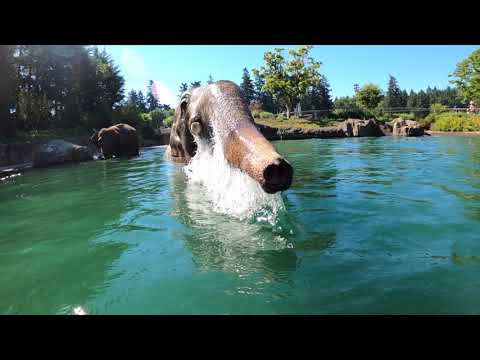– The ecological and behavioral aspects of animals having fun in the sun
– The role of sunlight in the health and mood of various animal species
– How zoo management can optimize outdoor habitats for the welfare of animals
– The significance of wildlife conservation efforts in maintaining natural behaviors in animals
– Strategies for engaging the public in wildlife conservation through educational content about animals in their natural habitats
Sunlight plays a crucial role in the ecological and behavioral patterns of animals. Exposure to natural light is essential for synthesizing vitamin D, crucial for bone health among vertebrates, including mammals, birds, and reptiles. Furthermore, sunlight regulates the circadian rhythms that dictate feeding, mating, and migration patterns in the animal kingdom. Observing animals engage in playful activities under the sun provides a delightful spectacle and offers insights into their natural behaviors and the importance of preserving their habitats.
Animal welfare in zoos and wildlife parks has increasingly emphasized providing environments that closely mimic natural habitats. This includes optimizing outdoor enclosures with adequate sunlight exposure, complexity, and shade areas to cater to different species’ needs. Effective zoo management strategies incorporate scientific research on animal needs and preferences to design habitats that stimulate their natural behaviors, such as foraging, climbing, or basking in the sun. These practices improve zoo animals’ quality of life and make educational exhibits more engaging for visitors, raising public awareness about species conservation.
Wildlife conservation is pivotal in ensuring that animals can continue to thrive in their natural habitats and display behaviors such as playing in the sun, which can indicate healthy ecosystems. Conservation efforts often focus on protecting habitats from degradation and fragmentation, which is vital for species that rely on large territories. Additionally, rewilding projects aim to reintroduce animals into areas where they have been extinct, restore ecological balance and enable natural behaviors to re-emerge. Conservationists strive to maintain biodiversity and ecological integrity through these efforts, allowing future generations to observe and learn from wildlife.
Engaging the public in wildlife conservation is essential for garnering support for conservation initiatives. Educational content that showcases cute animals having fun in the sun can captivate audiences and foster a deeper appreciation for the natural world. Educational programs can inspire action and advocacy by highlighting the science behind animal behaviors and the importance of conservation in preserving these moments. Social media platforms and zoo exhibits focusing on the joyous aspects of animal life in their natural or semi-natural habitats can effectively communicate that wildlife conservation is a shared responsibility.
In summary, the spectacle of animals enjoying themselves in the sunshine is more than just an endearing scene; it reflects animals’ complex ecological, behavioral, and physiological needs. Understanding these needs is crucial for effective zoo management, wildlife conservation, and educational outreach. By promoting environments where animals can exhibit their natural behaviors, including those as simple as frolicking in the sun, conservationists and zoo managers contribute to the well-being of animals and the enrichment of human understanding of the natural world. These efforts, in turn, play a vital role in fostering a culture of conservation and stewardship that is crucial for the future of biodiversity on our planet.
*****
Source Description
Have a cool weekend

